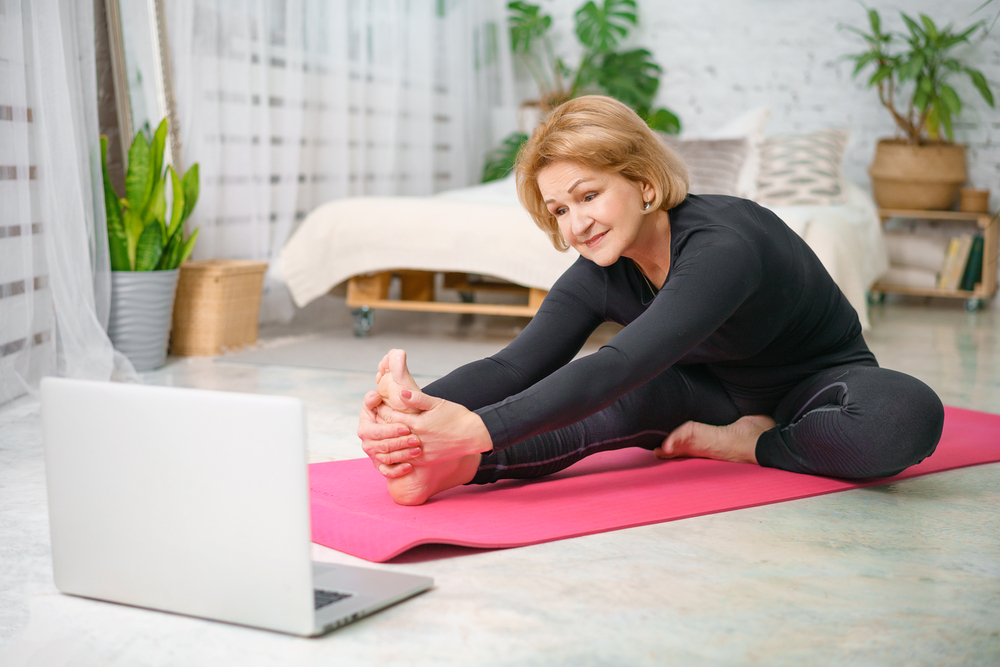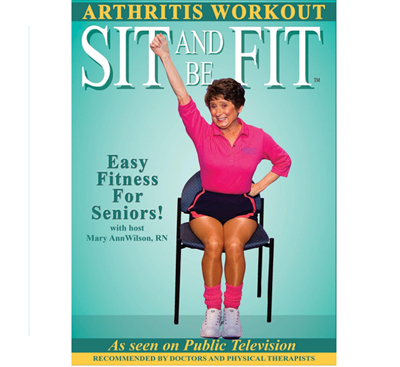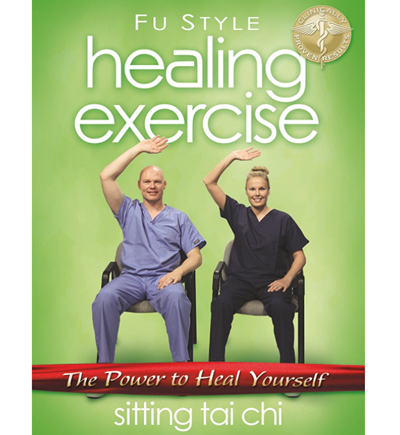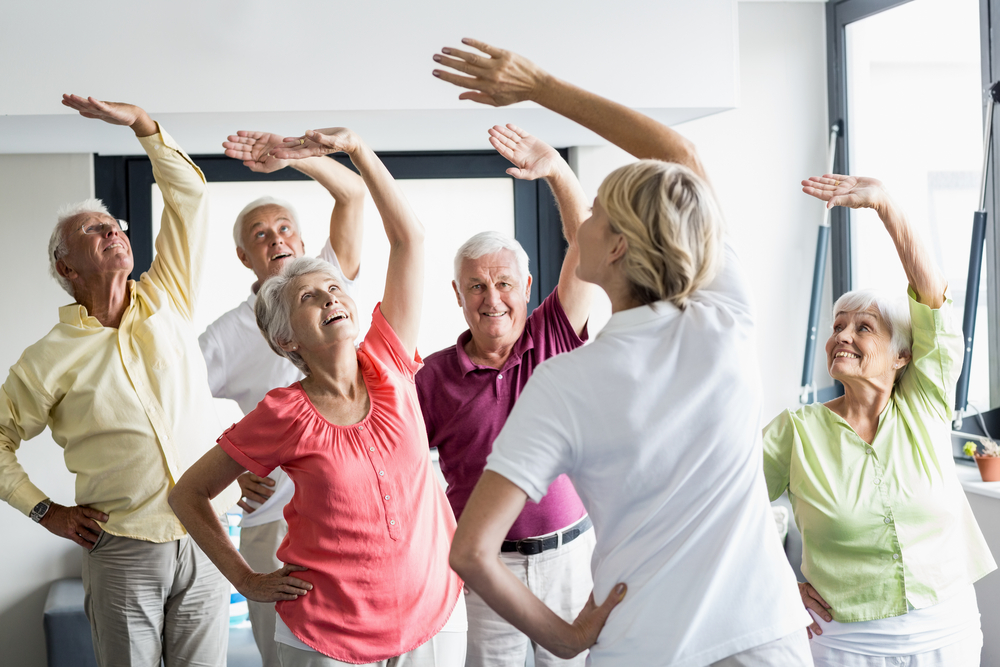
Getting enough exercise is critical for health. Even a small amount of exercise per every day can significantly increase life length and improve the quality of life as well.
That aside, exercise is simply a feel good tool. It can help lower stress, give you more energy and even make you happier. This makes it powerful for reducing depression risk and for making life a little bit easier.
Of course, we all know this.
Exercise is one of those things we all hope to do but many of us simply don’t. There are countless reasons why. Perhaps your life is simply too busy or you don’t have the money for the gym. You might also face physical challenges that limit your ability to exercise.
But, you can actually be active regardless of your age, your schedule and any other challenges that you face.
The first step is to simply look for solutions that fit your needs. This includes thinking about what is practical for your needs and what you actually enjoy.
After all, exercise shouldn’t be torture. If you enjoy what you’re doing, you’re more likely to stick to it in the long term.
With this post, we’re taking a look at powerful solutions for exercise in and around the home. The options are perfect for people who cannot afford the gym and those who hate group exercise classes.
The concepts can also be applied to pretty much anyone. So, many of these ideas will work well for seniors and for caregivers, along with the rest of the family.
Effective Exercise Videos and DVDs That Make A Difference
I know, I know. Exercise videos seem old-fashioned, somewhat outdated and boring. But, there’s a reason they continue to be popular.
Exercise videos a powerful because they offer direction and instruction right in your own home. This gives you insight into techniques that you can follow and a visual guide about what to do at all times.
The idea also works well for motivation.
After all, the classes have a set pace and progression. This can encourage you to exercise for longer and push yourself further.
You’re also exercising at home, so there’s no one to judge if you get things wrong. You can even pause the recording if you need to catch your breath.
The other cool thing is versatility.
There are hundreds of different home exercise programs out there, for every audience that you can imagine (like these).
For example, there are many exercise DVDs specifically targeted at seniors. These vary in style and tone but they take the challenges that seniors face into account. Some focus on seated exercises, while others are designed for seniors who can move around more.
One example is the Sit and Be Fit series. This is a popular choice for seniors and doesn’t tend to be patronizing either.

Another example is Sitting Tai Chi. This one has the added advantage of not being marketed to seniors specifically. That could make seniors more open to the idea. You might even find yourself joining in.

There are also many other options, including ones that aren’t focused on seniors directly. Most are fairly inexpensive too, so you could try multiple programs before you find one that you like.
The idea doesn’t have to be boring either. For example, I did Tae Bo exercise DVDs as a caregiver, which helped me release extra tension (even if the program itself was a little old-fashioned). There are also dancing-based programs like Zumba and many other variations.
You can shop around to find one that’s a good fit for your needs.
The most practical way to find resources like this is to shop online, such as through Amazon. This allows you to find the best prices. You can also focus on older DVD series and less well-known brands, as these will often be less expensive. Just make sure you check out the reviews first to find out what other people’s experiences are.
You can also look for videos and DVDs at second-hand stores, garage sales, and the library. Many people use them for a while then move on to something else, so there are plenty of options to go around.
There are also videos on YouTube that you can rely on instead.
On a final note, you can still find actual exercise videotapes, including older ones (Jane Fonda anyone?). These can be powerful for seniors simply because there is a sense of nostalgia involved.
Following Instructions

If you like guidance, exercises videos work well. But, some people prefer their own approaches.
There are many exercises that you can do at home with relatively little effort and few resources. For example, you can turn to apps or websites for directions about exercises and the correct technique to use.
Some specific easy exercises that you can work on at home include the following:
- Jumping jacks. While they’re not suitable for everyone, these are great fun and easy to do. They’re surprisingly powerful for cardio and you can increase how many you do over time.
- Pushups. These can be tough but they’re useful too. There are also many variations to decrease the challenge, such as doing them on your knees or against a wall.
- Crunches. These are another common option and most of us already know what to do. You don’t have to do the full range of motion either. Even smaller crunches work your muscles.
- Walking or running in place. This can be a good way to cool down between more intense exercises, or simply a way of exercising. It isn’t as interesting as walking or running outside, of course. But, there are still health benefits.
- Skipping. If you’re going to invest in a tool for exercise, a skipping rope is a great idea. These are very inexpensive and most people already know how to use them. Because of the fall risk, these won’t be suitable for many seniors. Still, they’re a good tool for caregivers – and you can get some fresh air too if you skip outside.
- Planks. You may need to look this one up to get the form right but planks are a fantastic way to increase strength.
- Lunges. These are another nice and simple exercise that most people can do.
- Yoga. There are many sites, apps, and books that will teach you the basic yoga moves. Once you know these, it’s easy enough to transition from one to another, figuring out your own workout as you go.
Of course, there are many others too. A good trick is to look at various home workouts and pick out which exercises would suit you. Try to find ones that target different parts of the body and get you moving in different ways.
Perhaps you can make a list of them and try to complete the list each day. You might also increase how many of each you do as time goes along.
Simple Weights Workouts
Resistance exercise is particularly powerful for health, helping people retain muscle mass and strength. Doing so is important for reducing fall risk and doesn’t have to be difficult either.
You can actually do a basic weights workout just using items you have at home, such as cans of food or water jugs. You can look online for basic forms and techniques, but weights workouts tend to be simple and aren’t hard to learn.
They also work well because you can feel your success and see how your strength improves over time.
Add in More Movement

Another easy approach is to just add more movement to your day. Rather than putting aside half an hour or an hour to exercise, you use small spaces of time.
A common idea is to put on music and dance while you’re doing the housework.
Doing so may make the housework take longer but it is a fun process that gets you moving.
For that matter, just putting on music and getting up to dance is a great way to increase movement. You can get seniors involved too, by putting on songs that they know and love.
If you have to run errands, walking instead of driving is another good tool. That won’t always be practical, of course. But when it is, you can increase your exercise without much extra effort. This is also a way to force yourself to slow down and to de-stress.
Other ways to add movement include the following:
- Do calf raises. These simply involve lifting your heels off the ground and can be done pretty much anywhere. They’re a good way to strengthen your muscles and are mostly unnoticeable to others (versus squats or lunges, which certainly aren’t).
- Stand or walk when you’re on the phone. Most of us sit by default when we’re on the phone but it’s just as easy to stand or walk. You can also get a headset if you want to free up your hands – especially for long conversations.
- Stand with other tasks. Think about other tasks where you sit down but don’t need to. Standing or walking during these can be great ways to add more movement. Folding washing is one example.
- Do something while watching TV. Stretching or basic housework is a good option. Both mean that you keep moving, rather than simply being still while you watch.
- Take breaks during commercials. If you are watching TV, some type of movement during commercials can help. That might be as simple as walking around the room a couple of times or stretching.
- Take the stairs. If it’s safe, take the stairs whenever possible.
- Tend a garden. Having a garden has many health benefits – one of which is exercise. Gardening doesn’t tend to be physically intense, but it does get you moving, much more than you realize. It is also an approach that works for caregivers and seniors.
There are countless more options as well. A good first step is to think about your day and try to figure out areas where it would be easy to add movement. We all will have some areas that we can improve in.
Final Thoughts
There are many other options for exercise and people tend to find their own paths.
But, regardless of your challenges, there are always some approaches that can work and work well.
The most important piece of advice is not to give up. If none of these options appeal to you, you can talk to a healthcare practitioner for advice or ask friends. You can also look online for additional tips and tricks.
Check out our posts on Seated Exercises for Seniors and on How to Safely Exercise at Any Age for extra details and guidance.
We’d also love to hear your perspectives.
Which types of exercises have worked for you? What do you find the most effective?

Leave a Reply